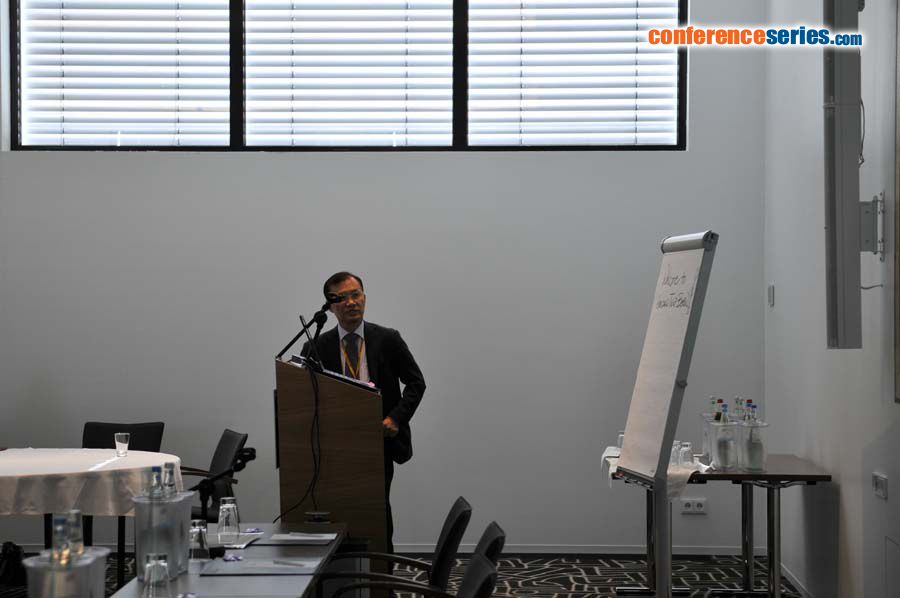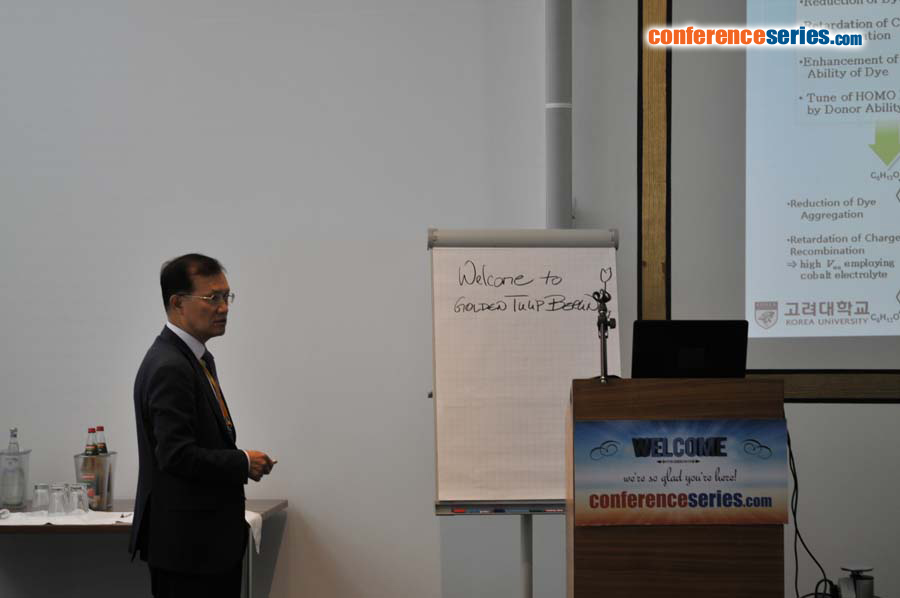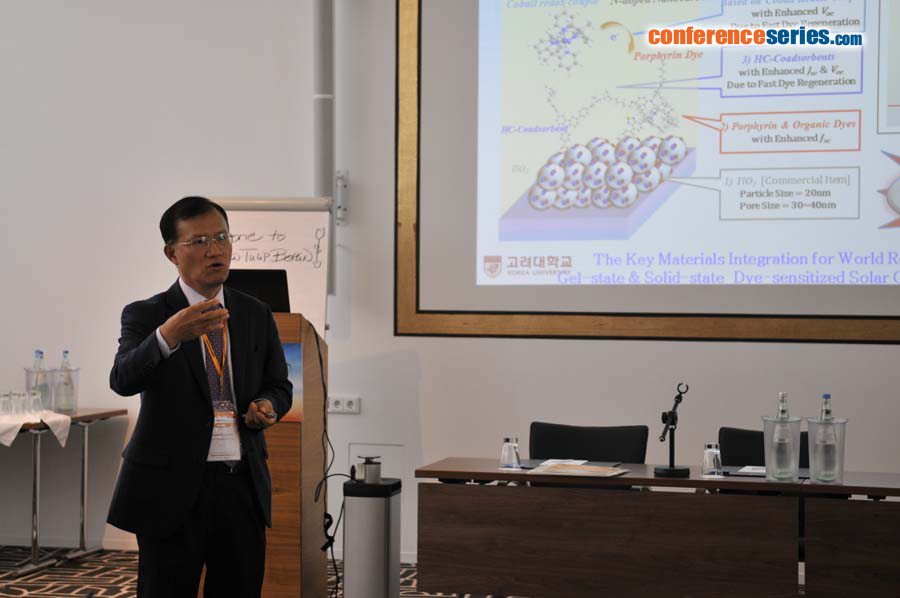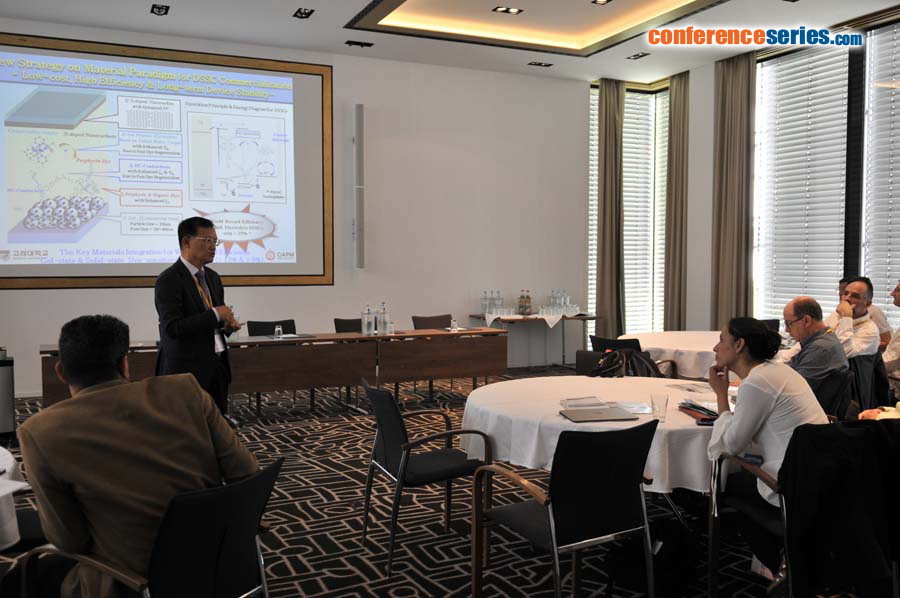
Hwan Kyu Kim
Korea University, South Korea
Title: Organic and polymeric semiconductor materials for commercially useful dye-sensitized solar cells
Biography
Biography: Hwan Kyu Kim
Abstract
Dye-sensitized solar cells (DSSCs) have attracted much interest as a promising renewable energy supply device based on the merits of low-cost, flexibility and easy fabrication. Very recently, a variety of organic dyes using inexpensive metals has been prepared for DSSCs. A state of the art DSC based on porphyrin-based solar cells with cobalt-based electrolyte has exceeded the conversion efficiency of 13.1%. For the high PCE of D-π-A sensitizer-based DSSCs, the structural modifications of a π-bridge, including tuning the energy levels and the improvement of intramolecular charge transfer (ICT) from D to A of the sensitizer, are particularly essential. We demonstrate that new thieno[3,2-b]indole(TI)-based D-π-A sensitizers and D–π–A structured Zn(II)–porphyrin sensitizers based on the structural modification of SM315 as a world champion dye for efficient retardation of charge recombination and fast dye regeneration were synthesized. The device with new porphyrin sensitizers exhibited the higher photovoltaic conversion efficiency (PCE) than those of the devices with SM315 as a world champion porphyrin dye and the TI-based DSSC exhibits a highest PCE (12.45%) than does TBT-based DSSC (9.67%). To further improve the maximum efficiency of the DSSCs, the first parallel-connected (PC) tandem DSSCs in the top cell with a TI-based sensitizer and bottom cell with a porphyrin-based sensitizer were demonstrated and an extremely high efficiency of 14.64% was achieved. In this presentation, new strategy on materials paradigm for low-cost, long-term stable, highly efficient dye-sensitized solar cells will be described in order to give right answers in overcoming the limitation of the existing technology for the practical use.





